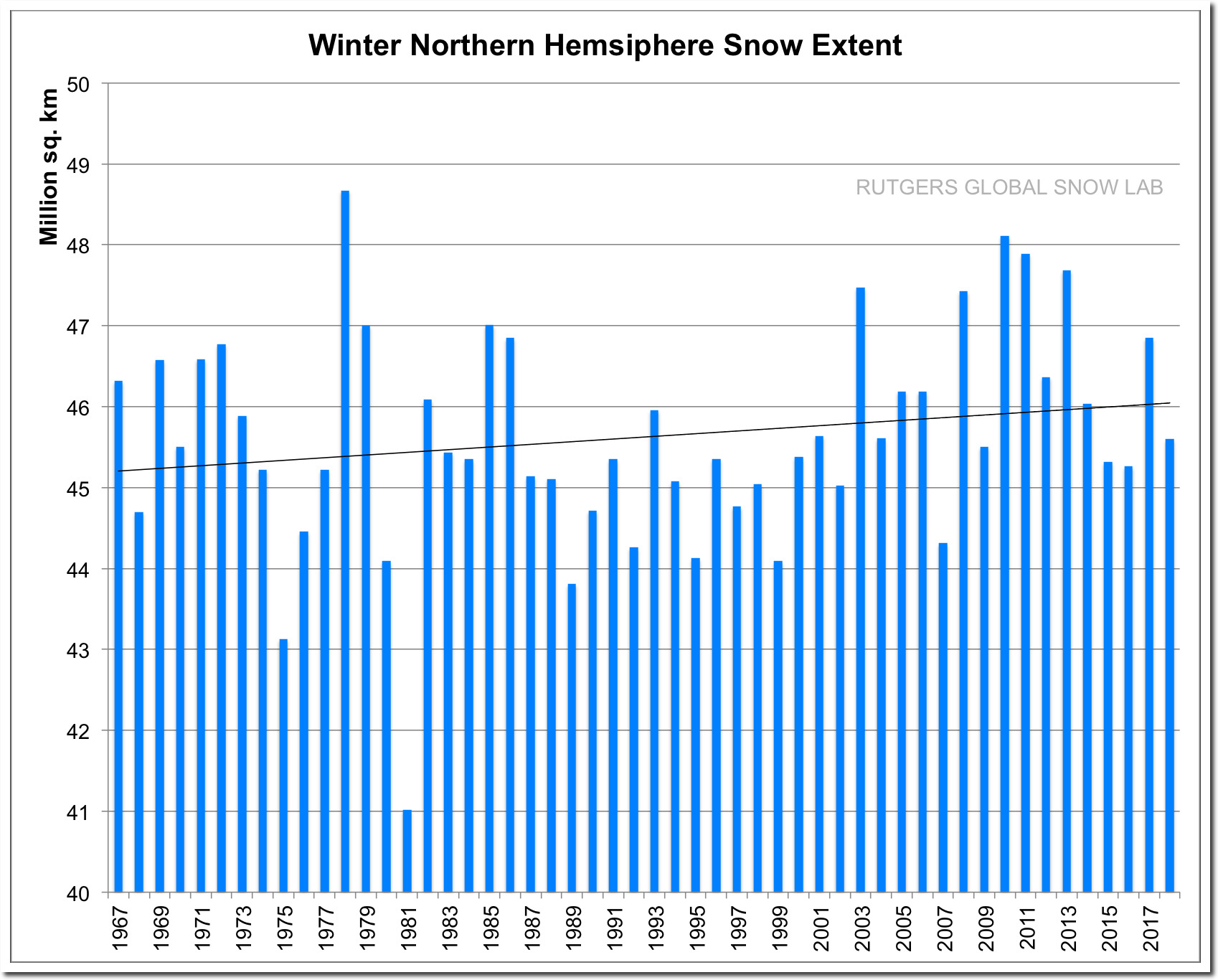No amount of experimentation can ever prove me right. A single experiment can prove me wrong.
- Albert Einstein
Climate models predicted the snow line moving north as a result of increases in greenhouse gases.
The response in snow cover to enhanced greenhouse warming is therefore complicated by projected increases in mid- to high-latitude precipitation, with the response varying by latitude and elevation. Climate models generally display a transition zone, around the present-day ?10°C isotherm, with expected snowfall increases to the north (high latitudes) and decreases to the south (midlatitudes)
If the climate was warming, precipitation falling in the mid-latitudes would fall as rain in places where it used to fall as snow. But the exact opposite is happening – the snow line is moving south.
November snow cover over North America was the most extensive since 1966.
Arctic Sea Ice News and Analysis | Sea ice data updated daily with one-day lag
Rutgers University Climate Lab :: Global Snow Lab
Rutgers University Climate Lab :: Global Snow Lab
Climate scientists can tamper with temperature data (and simply make temperature data up) but it is much harder for them to tamper with historical snow data. Climate models don’t work, and they form the basis of climate science. If the climate was warming, the snow line would be moving towards the pole, not away from it. And climate scientists wouldn’t have to cheat.





